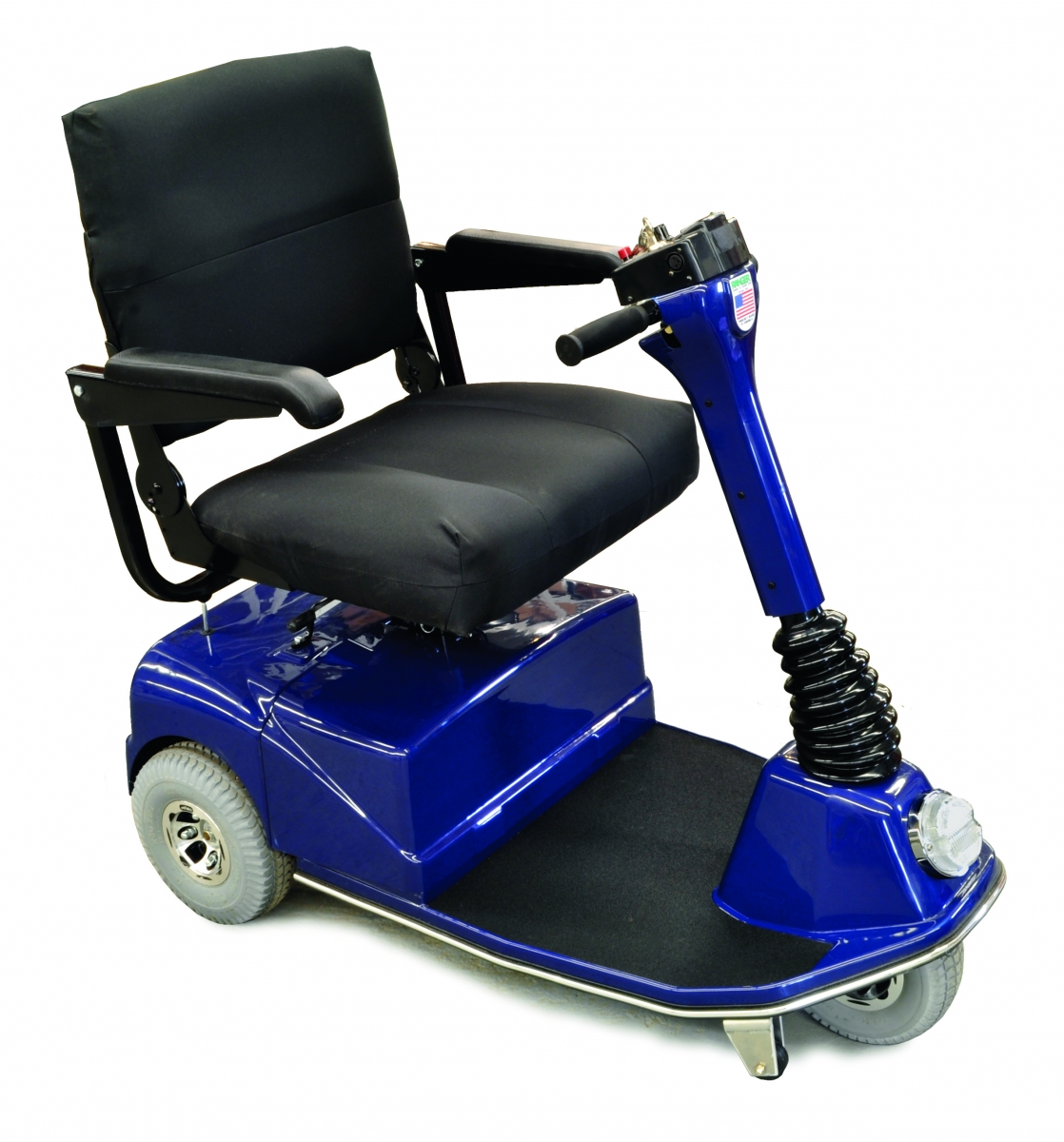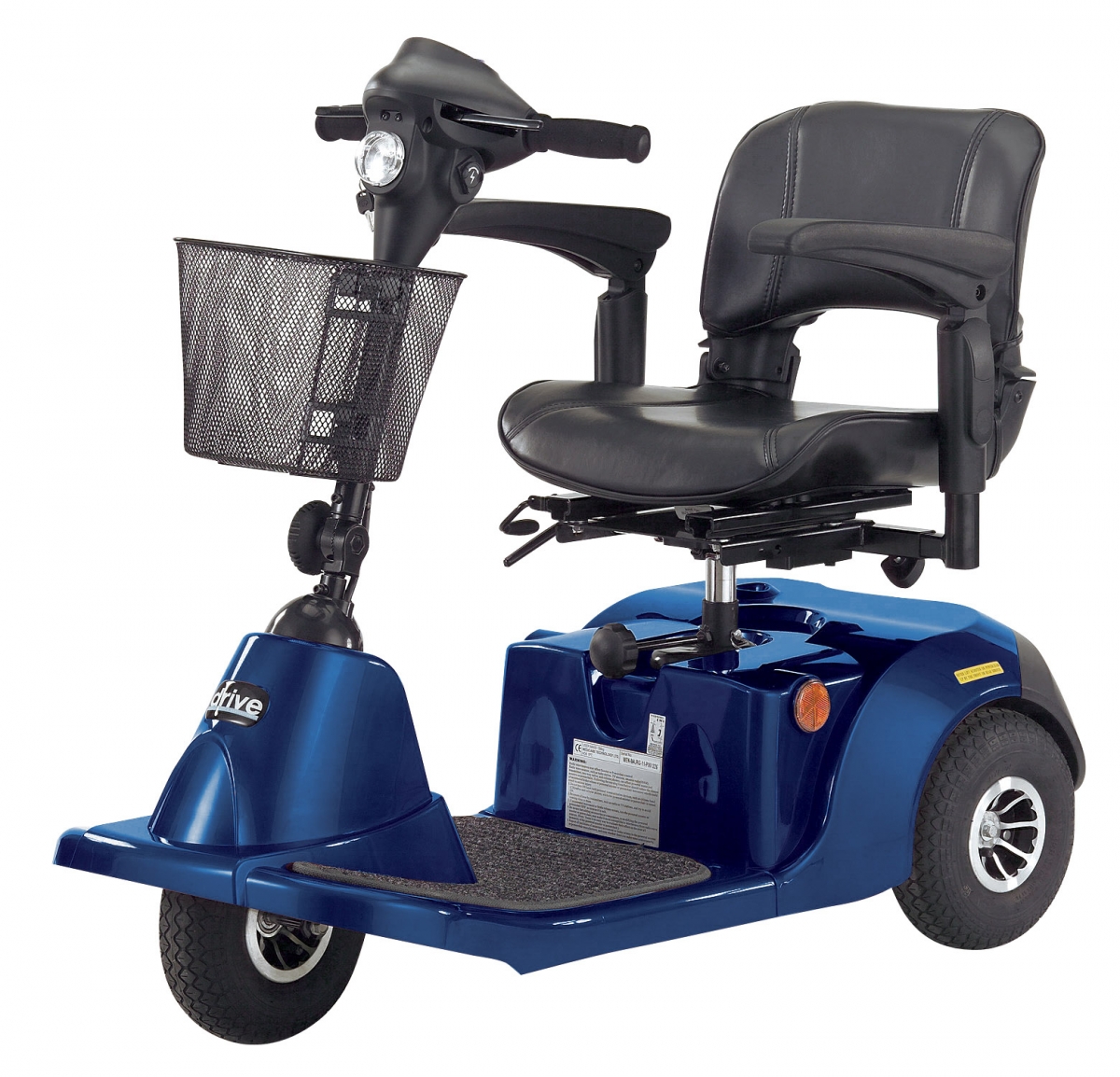Despite persistent economic and reimbursement challenges, favorable demographics continue to drive mostly strong sales throughout the scooter market. The much-hyped Baby Boomer Generation is a real phenomenon that sees one person turn 65 every 10 seconds in America—a staggering 8,640 per day.
Warmer than usual weather this year, plus a growing acceptance of scooters throughout society, adds up to decent numbers. “Mild winter conditions had more consumers out and about instead of confined to their homes in the late winter months,” says Cy Corgan, director of retail mobility sales for Pride Mobility Products Corp. “Plus, providers have increased consumer awareness through referral-based marketing, direct marketing programs and increased advertising.”
Michelle Mikitish, sales manager for Pride Mobility, emphasizes that market success demands a focus on retail and scooter sales as a profit center, and not as a mere afterthought. “Those who are willing to employ new and creative marketing strategies to drive consumer awareness on a consistent basis also drive more traffic to their showroom, and ultimately, more sales,” she says. “Use a store ‘planogram’ to lay out the showroom in an efficient and visually appealing manner. Use manufacturer merchandising materials to highlight products, and as an educational tool for consumers.”
“More and more dealers are focusing on retail sales as a way to increase their scooter business, and it’s working. Although the scooter industry has changed, it is gaining strength.”
Scooters fall into the Medicare, private insurance and cash market categories, with cash representing the largest opportunity these days. In the cash market space, a feature-rich product attracts consumer attention.
According to Corgan, stylish looks, combined with an easy-to-use delta tiller, quick disassembly, crush-proof basket and a comfortable seat all deliver desirable benefits. “The cash market for high-performance products with 13-inch drive tires, full suspension, high-back adjustable seats and top speeds of up to 10 mph is growing,” he says. “Consumers love the idea of being able to get wherever it is that they want to go.”
Gaining Strength
Executives at Golden Technologies in Old Forge, Pa., report that scooter sales are up in 2012, with HME providers finding a home for all sizes and categories. “More and more dealers are focusing on retail sales as a way to increase their scooter business, and it’s working,” says Jason Davis, vice president of sales for Golden Technologies. “Although the scooter industry has changed, it is gaining strength. Scooters are purchased through all avenues, including cash retail, Medicare and private insurance, but I think we will see significant growth in the retail and rental markets in the future.”
Since retail is not bound by a reimbursement amount, Davis maintains that profits are possible if the right features are offered. “Dealers can make solid margins by showing all of the bells and whistles on a scooter, such as the LiquiCell gel comfort technology in our Companion line,” he says. “Aesthetics are also a major variable in retail sales. Who would want to buy a product that has an institutional look when they can purchase a modern, appealing scooter? A scooter is a reflection of the end user’s personality, as well as what they need in a mobility product.”
Many consumers who choose to bypass Medicare and purchase scooters with cash are willing to spend a little more for quality products. Jeff Hollander, sales and marketing director for Ranger All-Season, counts on this mentality while emphasizing the maintenance-free aspects of his products.
The emphasis has paid off so far in 2012, with sales up in a tough market. “Selling quality American-made products has served us well in today’s market,” says Hollander. “Ranger does tend to cost more than overseas-made products, and there is a more discerning buyer at the end. Often this buyer pays in cash. That said, we do not brand ourselves as a luxury item—just a maintenance- and worry-free mobility solution with the strength of a tank.”

During the many decades of Ranger’s existence, the pendulum often swung toward power chairs, but Hollander believes that scooters are now on equal footing. “In the collective consciousness, people would rather be on a scooter,” he says. “Ultimately, we should be optimistic because we are looking at millions of Baby Boomers retiring and international markets are opening up for us.”
Even with favorable demographics squarely on the side of the scooter industry, Hollander sees strife among many dealers. “It is more difficult and expensive to do business than it has been, and it’s going to get worse,” he says. “Providers are having trouble keeping their lights on. There are going to be fewer options for people, and that’s bad for consumers.”
Providers who stay in the Medicare market will look for economically sound products with fewer extras. In this scenario, Mikitish says that reliability and cost tend to override the more feature-rich products coveted by cash customers. “Private insurances and workman’s comp companies are most likely to provide products that help patients maintain an active lifestyle,” she adds.
Steve Neese, president of power mobility for Drive Medical Design and Manufacturing, sells both power chairs (category two consumer) and scooters. A high percentage of power chairs are Medicare and third party payor, while scooters are primarily cash—an advantage in today’s competitive bidding environment. “We are seeing dealers who used to focus on power chairs switch to the scooter category,” says Neese from his Columbia, S.C., office. “The overall scooter market is good, and we are seeing increases. Those increases are partly due to demographics and partly due to the profile of the person buying the chair.”

Specifically, these customers do not want to wait for insurance, even if they have it. They have the means to pay cash, and they are willing. While these customers are out there, getting the word out is still crucial. “We are trying to help providers to market these products,” says Neese. “We put ads in the paper. We have a floor-plan program where they can get product at a discount to put on their floor. We print tent cards, posters and marketing collateral that is not typically associated with reimbursed products—but certainly for cash products. We have tri-folds that consumers can walk out with. I think providers need all of that to help them move more scooters.”
Ranger All-Season’s recent success with its bariatric line is a testament to the need for expanded referral sources that can tap the market for large patients who require extra weight capacity. “Far and away we are getting the most interest in our XT-550, a scooter that will handle a capacity of 550 pounds,” reports Hollander. “Long before bariatrics was even a term, we had our sights set on machines that would handle large capacities.”
While larger scooters have performed well for Ranger, other companies such as Drive have had success with smaller units. The company’s SpitFire 1420 can be used inside or out, and can be broken down into five pieces and put into the trunk. “If you want to take Mom to the mall, you don’t need a scooter carrier on the car or a ramp,” Neese explains. “You can put the pieces back together without a tool in about five minutes, and Mom can roll next to you at the mall. There used to be transport scooters, standard and bariatric. Now you have micro, transportable, standard, bariatric and deluxe. I would classify the SpitFire as a transport scooter.”
Over at Pride, the venerable Go-Go Travel Mobility line of scooters continues to perform well for the Exeter, Pa.-based company. “The recently launched Victory Sport is the first 10-inch class product to offer a top speed of up to 8 mph, full suspension, full lighting package and a sporty new look that makes it ideal for retail sale,” says Corgan.
At Florida-based Heartway USA, General Manager Alec Lin sees plenty of opportunity in the Sunshine State and beyond. “The change from power chairs to power scooters is in swing,” he says. “The upside for the scooter market is that people are more open and willing to ride on scooters for all occasions. There are always people in need, and the market will only grow, as it has already for our Bolero and Vita models.”
